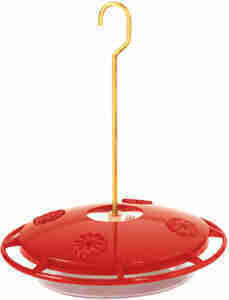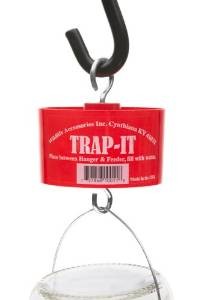How to Make Hummingbird Food: A Complete Guide
If you’ve ever watched a hummingbird hover in mid-air, sipping nectar from flowers, you know how mesmerizing these tiny creatures can be. Attracting hummingbirds to your yard is a rewarding experience, but it all starts with offering the right food. While many people opt for store-bought nectar, making your own hummingbird food is simple, cost-effective, and allows you to control what goes into it. In this guide, we’ll show you how to make hummingbird food at home, including the right ingredients, recipes, and tips for feeding these beautiful birds.
Why Make Your Own Hummingbird Food?
Before we get into the specifics of how to make hummingbird food, let’s take a moment to consider why you should make it yourself. There are several advantages to homemade nectar over store-bought varieties:
- Cost-effective: Making your own hummingbird food is incredibly affordable. A typical store-bought nectar solution often contains added chemicals or preservatives and can become costly over time.
- Natural Ingredients: Homemade nectar is made from just two simple ingredients: white granulated sugar and water. This ensures that you’re offering the birds a safe and natural food source, without harmful additives.
- Control Over Ingredients: When you make your own nectar, you can be sure that no artificial coloring or chemicals are added, which is particularly important for the health of the birds.
What You Need to Make Hummingbird Food
Making your own hummingbird food requires just a few simple ingredients and tools:
Ingredients:
- White Granulated Sugar: This is the preferred type of sugar for hummingbird food. Avoid using honey, as it can cause harmful fungal growth.
- Water: Filtered or tap water is fine for preparing the nectar. It’s important to use the right water-to-sugar ratio for optimal nectar strength.
Tools:
- Measuring Cups and Spoons: To ensure you get the correct sugar-to-water ratio.
- Mixing Bowl: For combining the sugar and water.
- Funnel (optional): Helpful for pouring nectar into feeders without spilling.
- Clean Feeder: Make sure your hummingbird feeder is clean before filling it with fresh nectar.
Step-by-Step Guide to Making Hummingbird Food
Now that you’ve gathered your ingredients and tools, let’s go over the basic recipe for making hummingbird food.
Basic Hummingbird Food Recipe
The best and simplest hummingbird food recipe uses a 1:4 sugar-to-water ratio:
- Boil the Water: Start by boiling 1 cup of water. This will help dissolve the sugar completely and prevent the growth of mold.
- Mix in the Sugar: Once the water reaches a boil, remove it from the heat and stir in ¼ cup of white granulated sugar. Stir until the sugar has fully dissolved.
- Cool the Mixture: Allow the nectar to cool to room temperature before filling your feeder. Hot nectar can harm the birds, so make sure it’s safe for them to consume.
- Fill the Feeder: Once the nectar has cooled, use a funnel (or carefully pour) to fill your hummingbird feeder. Be careful not to spill or waste any nectar.
- Store Leftover Nectar: If you have any leftover nectar, store it in the refrigerator for up to one week. Always let it cool to room temperature before using it again.
Alternative Recipes for Hummingbird Food
While the basic 1:4 recipe is ideal for most situations, there are a few variations you might consider based on your preferences or the needs of your local hummingbird population:
- Organic Hummingbird Nectar: If you prefer organic ingredients, you can substitute organic cane sugar for the white granulated sugar. This may provide a more natural alternative without any pesticides.
- Seasonal Variations: Some people add a pinch of salt or a small amount of vitamin B1 to provide additional nutrients. However, be cautious—too much can be harmful to the birds.
How to Serve Hummingbird Food
Once your hummingbird nectar is prepared, you’ll want to serve it in the most effective way possible. Here’s how:
Best Practices for Feeding Hummingbirds:
- Clean Your Feeder Regularly: It’s essential to clean your hummingbird feeder thoroughly at least once a week. Nectar can spoil quickly, and mold can grow in the feeder, which is dangerous for the birds. Use hot water and a bottle brush to scrub every part of the feeder.
- Choose the Right Feeder: There are many types of hummingbird feeders available, including bottle-style and dish-style feeders. Choose one that’s easy to clean and has multiple feeding ports to accommodate several birds at once. Here’s the best hummingbird feeder to use. Easy to clean and keeps away ants and bees!
- Feeder Placement: Place your feeder in a shaded area, as direct sunlight can cause the nectar to spoil more quickly. Hanging it near flowers or shrubs can also attract more hummingbirds. Here’s a great article that tells everything you need to know about how to choose the best place to hang your hummingbird feeder.
While making hummingbird food is fairly straightforward, there are a few common mistakes you should avoid:
- Using the Wrong Sugar: Never use brown sugar, powdered sugar, or artificial sweeteners in your hummingbird nectar. These sugars can cause harm to the birds and disrupt their digestion.
- Adding Food Coloring: It’s tempting to add red food coloring to the nectar, but this is unnecessary and could be harmful to the birds. Most hummingbird feeders are already red, and the birds are naturally attracted to the color.
- Using Honey: Honey can cause fungal growth, which is toxic to hummingbirds. Stick with white granulated sugar for a safe, effective nectar.
- Infrequent Cleaning: If you don’t clean your feeder regularly, mold and bacteria can build up, causing illness or death in hummingbirds. Clean your feeder every few days, especially during warm weather.
How to Keep Hummingbirds Coming Back
Once you’ve set up your hummingbird feeder, it’s important to encourage the birds to return. Here’s how you can do that:
- Create a Hummingbird-Friendly Garden: Planting native flowering plants like trumpet vines, bee balm, or columbine can provide a natural food source for hummingbirds. Here’s a complete guide to attracting hummingbirds to your yard.
- Provide Fresh Water: Hummingbirds need water for hydration and bathing. A shallow birdbath or a small fountain can attract them, especially in hot weather.
- Consistency is Key: Hummingbirds thrive on routine. Try to keep your feeder full and clean, and feed them regularly.
Conclusion
Making your own hummingbird food is simple, affordable, and ensures that you’re providing a healthy, natural nectar source for these amazing birds. By following the steps outlined in this guide and avoiding common mistakes, you’ll be well on your way to attracting more hummingbirds to your garden. Whether you’re a seasoned bird watcher or a beginner, feeding hummingbirds is a rewarding experience that can bring joy and beauty to your outdoor space.
Happy bird watching!________________________________________________
Now that you know how to make hummingbird food, you will need to get a feeder that is easy to take apart and clean, and one that will also protect your hummingbird food recipe from bees ants and wasps.
My favorite choice of hummingbird feeders to use with the homemade hummingbird nectar recipe is
 Aspects 12oz Hummzinger Ultra With Nectar Guard
Aspects 12oz Hummzinger Ultra With Nectar Guard
It’s inexpensive and has several features that makes it well worth the price.
The HummZinger has patented Nectar guard tips which are flexible membranes attached to the feed ports that prohibit entry from flying insects, but allow Hummingbirds to feed as usual. The HummZinger also has a built in ant moat that will stop crawling insects from getting to the nectar. It also has raised flower ports that divert rain.
This mid-size nectar feeder has a 12 oz. capacity and can be hung or post mounted with hardware provided. It has four feeding ports for hummingbirds and is made of unbreakable polycarbonate. Easy to clean.
For ease of cleaning and protection from bees, wasps and ants, this feeder can’t be beat.
If you already have a hummingbird feeder, and you want to protect it from ants and other crawling insects, the ant moat below will do the job.

Trap-It Ant Moat for Hummingbird Feeders
An ant moat is still the best way to protect your hummingbird feeder from crawling insects such as ants. All you have to do is inset the moat between the feeder hanger and the feeder itself. Then fill the ant moat with water to provide a barrier for crawling insects.
I hope you enjoyed this article on how to make hummingbird food.

